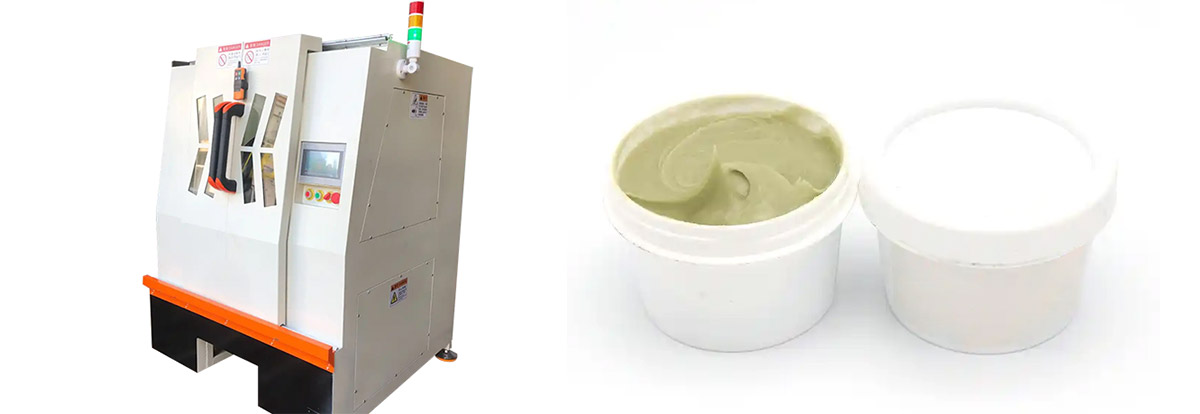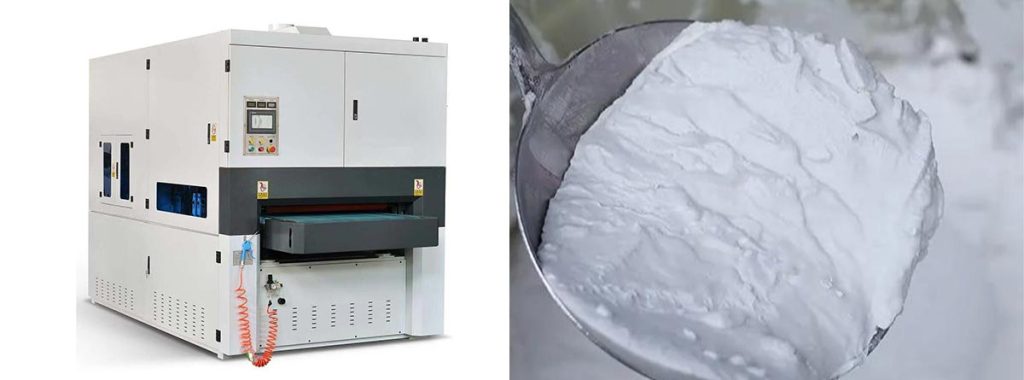

Buffing and polishing compounds play a vital role in preserving the efficiency of solar panels. These compounds remove surface imperfections, ensuring optimal light absorption. By maintaining a smooth and clean surface, they enhance energy output and extend the lifespan of solar panels. Regular buffing also protects panels from environmental damage, such as scratches or debris buildup. Additionally, these compounds improve the aesthetic appeal of solar panels, which is essential for installations in visible areas. Their contribution to renewable energy sustainability makes them indispensable in solar panel maintenance.
Key Takeaways
- Buffing and polishing compounds help solar panels work better. They remove scratches, allowing more light to be absorbed for energy.
- Regular care, like buffing, keeps solar panels safe from harm. This makes them last longer and work well over time.
- Picking the right buffing compound is very important. Look at things like ingredients, grain size, and how well it cleans.
- Machines for buffing make the process faster and safer. They also reduce waste and keep the work consistent.
- Check your solar panels often to keep them working their best. This helps find problems early and ensures good energy production.
Types of Buffing and Polishing Compounds in Renewable Energy Manufacturing
Solid Buffing Compounds
Solid buffing compounds are widely used in renewable energy manufacturing due to their versatility and effectiveness. These compounds, often shaped as bars, are ideal for manual or semi-automatic buffing operations. Operators typically apply the compound to a rotating buffing wheel using a motor-driven buffing jack. This process ensures even distribution and optimal results.
Solid compounds are particularly effective for removing scratches and imperfections from metal surfaces. Industries such as automotive, jewelry, and metalworking rely on these compounds for their ability to enhance surface quality. The table below highlights their applications and benefits across various sectors:
| Industry | Application | Benefits |
|---|---|---|
| Metalworking | Enhancing the appearance of stainless steel, aluminum, brass, and copper. | Achieves smooth and shiny finishes. |
| Jewelry | Polishing precious metals using compounds like Jeweler’s Rouge. | Polishes without removing material. |
| Automotive | Restoring shine of vehicle components. | Improves aesthetic appeal and surface quality. |
| Manufacturing | Eliminating scratches and imperfections on tools and machinery. | Enhances tool longevity and performance. |
| Home Improvement | Polishing metal fixtures and restoring household items. | Revitalizes appearance of household items. |
Liquid Buffing Compounds
Liquid buffing compounds offer a more flexible solution for polishing applications. These compounds are easy to apply and work well on delicate surfaces, including solar panels. Their liquid form allows for precise control, making them suitable for automated processes. Liquid compounds are often used in polishing plastics, ensuring a smooth finish without causing damage.
Specialty Buffing Compounds for Solar Panels
Specialty buffing compounds are specifically designed to meet the unique needs of solar panel maintenance. These compounds feature a buff compound formula tailored to remove debris and restore clarity without harming the panel’s surface. By incorporating advanced manufacturing practices, these compounds ensure maximum efficiency and durability for solar panels.
Application Methods for Buffing and Polishing Compounds
Manual Buffing and Polishing Techniques

Manual buffing remains a reliable method for maintaining solar panels, especially in small-scale operations or areas with limited access to machinery. This technique involves applying buffing compounds directly to the panel’s surface using hand tools or cloths. Operators use circular motions to evenly distribute the compound and achieve a polished finish. This method is particularly effective for addressing localized imperfections or scratches. However, manual buffing requires significant time and effort, making it less suitable for large-scale applications.
Automated Processes with Industrial Buffing Machines
Industrial buffing machines streamline the compound application process, offering precision and efficiency. These machines use advanced technologies, such as Fixed Abrasive Buff (FAB), to enhance performance. FAB technology reduces compound consumption by up to 90% and extends buff life by 35%. It also achieves a lower surface roughness (Ra) of 1 to 5 microns, ensuring a smoother finish. Additionally, automated systems provide consistent results, minimizing the variability associated with manual techniques. This consistency reduces the need for downstream cleaning and limits worker exposure to airborne particles, making it a safer and more sustainable option.
| Metric | Improvement |
|---|---|
| Compound Consumption | Up to 90% less |
| Buff Life | Up to 35% longer |
| Surface Finish | Lower Ra (1 to 5 microns) |
| Finish Consistency | Higher consistency |
Hybrid Approaches for Solar Panel Maintenance
Hybrid approaches combine manual and automated methods to optimize solar panel maintenance. These techniques leverage the precision of machines for large surfaces while using manual methods for intricate areas. Research highlights the effectiveness of hybrid models, such as NCPO-ELM, in improving solar panel performance. For instance, NCPO-ELM reduces the Mean Absolute Percentage Error (MAPE) by 84.34% in Inner Mongolia and 55.94% in Ningxia compared to traditional models. This approach ensures comprehensive maintenance, addressing both efficiency and quality.
- NCPO-ELM achieves an 84.34% reduction in MAPE in Inner Mongolia compared to Benchmark ELM.
- In Ningxia, NCPO-ELM reduces MAPE by 55.94% compared to Benchmark ELM.
- It outperforms CNN-Stacked-LSTM with reductions of 18.87% and 9.17% in respective validation sets.
Hybrid methods provide a balanced solution, ensuring thorough maintenance while maximizing efficiency.
Selecting the Right Buffing Compounds and Methods
Key Factors for Choosing Compounds
Selecting the right buffing and polishing compounds is essential for maintaining solar panel efficiency. Several factors influence this choice, ensuring the compounds meet specific maintenance needs:
- Composition of the Compounds: The chemical makeup determines their effectiveness on different surfaces.
- Grain Size: Smaller grains provide a finer finish, while larger grains are better for removing deeper imperfections.
- Shape and Hardness of the Grains: These properties affect the compound’s ability to polish without damaging the surface.
- Cleaning Characteristics: Compounds with easy-to-clean properties reduce residue buildup, simplifying maintenance.
Understanding these factors helps manufacturers and technicians choose compounds that align with the unique requirements of solar panels.
Matching Compounds to Application Methods
The compatibility between buffing compounds and application methods significantly impacts the results. For manual techniques, solid compounds work well due to their controlled application. Liquid compounds, on the other hand, are ideal for automated systems, offering precision and consistency. Hybrid approaches benefit from specialty compounds designed for both manual and machine use. Matching the compound type to the method ensures optimal performance and reduces waste.
Environmental and Sustainability Considerations
The growing emphasis on sustainability has led to innovations in eco-friendly buffing and polishing compounds. Manufacturers now prioritize compounds that deliver high-quality finishes while minimizing environmental impact. For instance, the Metal Polishing Compound Market highlights the shift toward sustainable alternatives. Advanced technologies, such as Fixed Abrasive Buff (FAB) wheels, further support this trend by reducing reliance on traditional compounds. Proper handling and disposal of excess materials also play a crucial role in compliance with environmental regulations. These practices not only enhance sustainability but also improve safety and efficiency in buffing operations.
Actionable Tips for Maintaining Solar Panels
Establishing a Regular Maintenance Schedule
A well-planned maintenance schedule ensures solar panels operate at peak efficiency. Routine inspections help identify debris, shading, or physical damage that may hinder performance. Cleaning the panels periodically removes dirt and blockages, allowing maximum sunlight absorption. Monitoring energy production through software provides valuable insights into system performance. This data helps detect inefficiencies early. Proper panel placement also plays a critical role in maximizing sunlight exposure. Additionally, integrating energy storage solutions can optimize the use of excess energy. Preventative maintenance, which includes regular check-ups and cleaning, extends the lifespan of solar panels and prevents costly repairs. Solar operations and maintenance (O&M) practices emphasize these activities to ensure long-term efficiency.
Proper Storage and Handling of Buffing Compounds
Buffing compounds are essential for maintaining the surface quality of solar panels. Proper storage and handling of these materials prevent contamination and ensure their effectiveness. Compounds should be stored in a cool, dry place, away from direct sunlight or moisture. Containers must remain sealed when not in use to avoid exposure to air, which can degrade the compound’s properties. During application, technicians should use clean tools to prevent introducing debris onto the solar panel surface. Following these guidelines preserves the quality of the buffing compounds and ensures optimal results during maintenance.
Tip: Always label storage containers clearly to avoid confusion and ensure the correct compound is used for each application.
Monitoring Solar Panel Performance and Efficiency

Regular performance monitoring is crucial for maintaining solar panel efficiency. Advanced software tools allow users to track energy production in real time. These tools help identify trends and detect potential issues, such as a drop in output caused by shading or dirt accumulation. Comparing current performance data with historical records provides a clear picture of the system’s health. If discrepancies arise, technicians can take immediate action to address the problem. Consistent monitoring not only ensures optimal energy generation but also supports long-term sustainability goals.
Conclusion
Buffing and polishing compounds remain essential in renewable energy manufacturing. They enhance solar panel efficiency, durability, and appearance, directly supporting sustainable energy goals. Proper application methods and careful compound selection ensure optimal performance and long-term maintenance success.
Note: Sustainable practices, such as using eco-friendly compounds and reducing waste, further align with global renewable energy objectives. These efforts contribute to a cleaner, greener future.
By integrating these strategies, manufacturers and technicians can maximize solar panel performance while promoting environmental responsibility.
